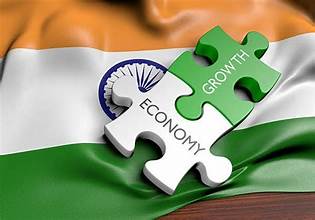In a significant announcement that sets the tone for economic expectations in the coming year, the Government of India has released its latest Gross Domestic Product (GDP) growth forecasts. These projections not only serve as a barometer of the nation’s economic health but also offer insights into sector-specific growth trajectories. As we delve into these figures, it’s crucial to understand the implications they hold for businesses, investors, and policy-makers alike.
GDP Growth Projection: A Comparative Analysis
The forecast for the current fiscal year points to a GDP growth rate of 7.3%, a slight uptick from the previous year’s projection of 7.2%. This increment, although modest, signals a steady upward trajectory in the nation’s economic growth. The Central Statistics Office (CSO) has been instrumental in putting forth these annual GDP growth estimates, providing a clear picture of the economic landscape.
Real GDP in Numbers: Understanding the Economic Scale
In a detailed breakdown, the National Statistics Office (NSO) anticipates the real GDP for the fiscal year 2023-24 to reach 171.79 trillion INR, based on the prices of the base year 2011-12. This is a significant rise from the provisional estimate of 160.06 trillion INR for the fiscal year 2022-23, released on May 31, 2023.
Official Statement on GDP Growth
The official statement underscores that the real GDP growth for the current fiscal year is estimated at 7.3%, slightly higher than the 7.2% recorded in the previous fiscal year. Furthermore, the GDP at current prices for 2023-24 is projected to be 296.58 trillion INR, compared to the provisional estimate of 272.41 trillion INR for 2022-23, released earlier in May.
Reserve Bank of India’s GDP Growth Forecast
The Reserve Bank of India (RBI), in its recent bimonthly monetary policy review, revised the GDP growth forecast for 2023-24 from 6.5% to 7%. This adjustment reflects the central bank’s optimism about the nation’s economic resilience and potential for growth.
Sector-Specific Growth Projections
- FY24 GDP Growth: Estimated to increase from 7.2% to 7.3% year-over-year (YoY)
- Mining Sector Growth: Projected to rise from 4.6% to 8.1% (YoY)
- Manufacturing Growth: Expected to grow from 1.3% to 6.5% (YoY)
- Construction Growth: Anticipated to increase from 10% to 10.7% (YoY)
- Industry Sector Growth: Forecasted to rise from 4.4% to 7.9% (YoY)
- Government Consumption Growth: Projected to grow from 0.1% to 4.1% (YoY)
Sectors with Revised Growth Estimates
- FY24 GVA Growth: Revised from 7% to 6.9% (YoY)
- Nominal GDP Growth: Adjusted from 16.1% to 8.9% (YoY)
- Agricultural Sector Growth: Expected to decrease from 4% to 1.8% (YoY)
- Services Sector Growth: Anticipated to drop from 9.5% to 7.7% (YoY)
- Private Consumption Growth: Projected to fall from 7.5% to 4.4% (YoY)
- Capital Formation Growth: Estimated to decrease from 11.4% to 10.3% (YoY)
Decoding the Economic Indicators
The projected increase in GDP growth, albeit marginal, is a positive sign for the Indian economy. It suggests a gradual strengthening of economic activities across various sectors. The significant growth in the mining and manufacturing sectors indicates a revival of industrial activities, which is crucial for job creation and overall economic development.
The construction sector, a key driver of economic growth, is also expected to witness robust growth. This is indicative of increased infrastructure development and real estate activities, which often serve as a catalyst for other industries.
On the other hand, the downward revisions in sectors like agriculture and services signal challenges that need to be addressed. These sectors are vital for the overall economic balance and provide employment to a large portion of the population.
Conclusion: Navigating the Economic Landscape
As we analyze these projections, it becomes evident that while there are areas of strong growth, certain sectors require more focused attention and support. Policymakers, investors, and business leaders must work collaboratively to ensure balanced growth across all sectors, thus steering the economy towards a sustainable and inclusive development path.
Understanding these economic trends and forecasts is crucial for strategic planning and decision-making. As India continues on its journey of economic progress, staying informed and adaptive to these changes will be key to navigating the ever-evolving economic landscape.




